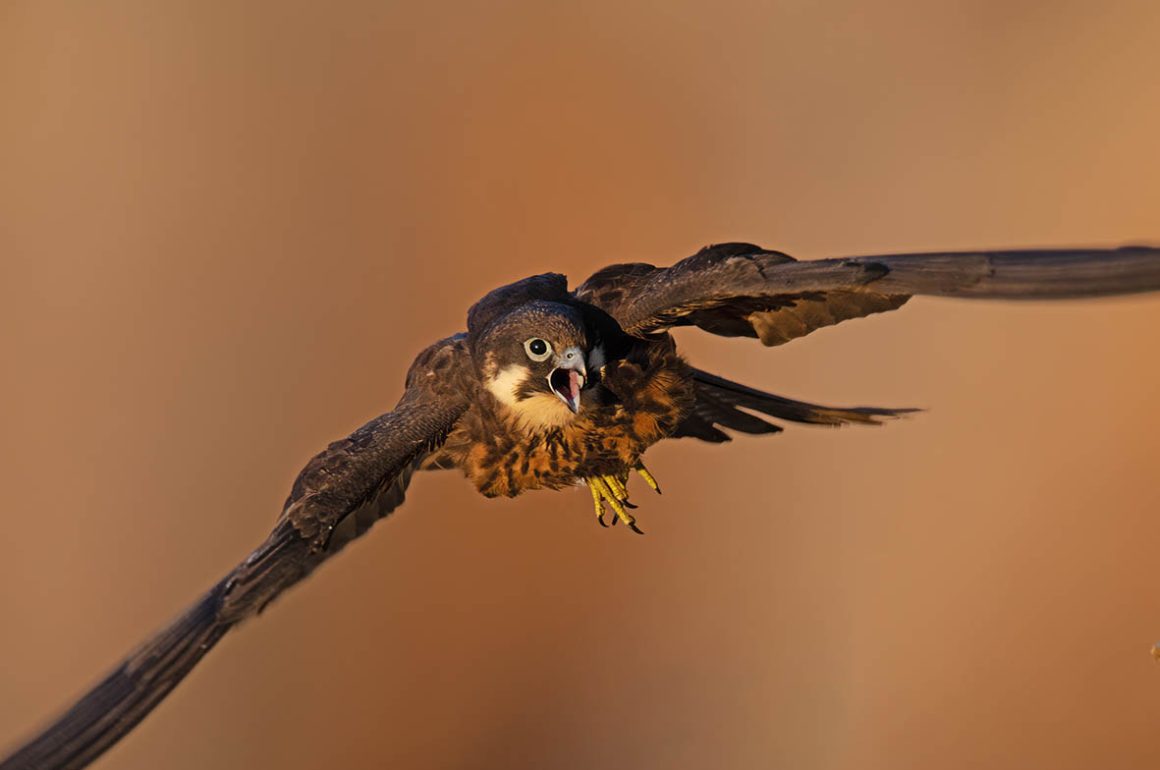
The vast majority of Palaearctic birds have now finished breeding and are either heading south, dispersing locally or going into moult. Many of the birds now heading south are in a terrible state, ready to drop the old feathers and replace them with new ones. Some start the moult, then pause it in order to migrate and complete it in the winter quarters. All this makes sense. Migrate south as the days start to get shorter and don’t leave it until it is too late. Shorter days mean less feeding time and you certainly don’t want to have to raise a brood in those conditions. One mouth is enough to feed with the shortening days.
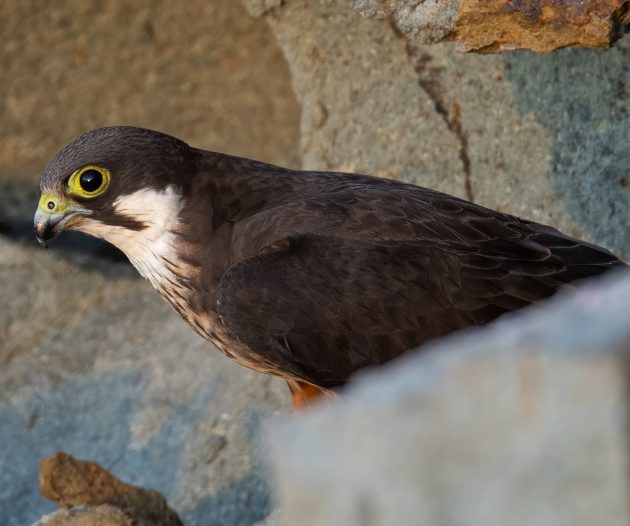
But there is one bird that goes totally against the grain and precisely starts breeding right now. I’m referring to the Eleonora’s Falcon (Falco eleonorae). The bird derives its name from Queen Eleonor of Arborea, Sardinia. In 1392 she became the first ruler in history to protect the nests of these falcons against illegal hunters. Sardinia, today, remains a major island for this species, with a very large colony on San Pietro Island (just off the SW coast), that holds 115 breeding pairs in just 7 km of coastline.
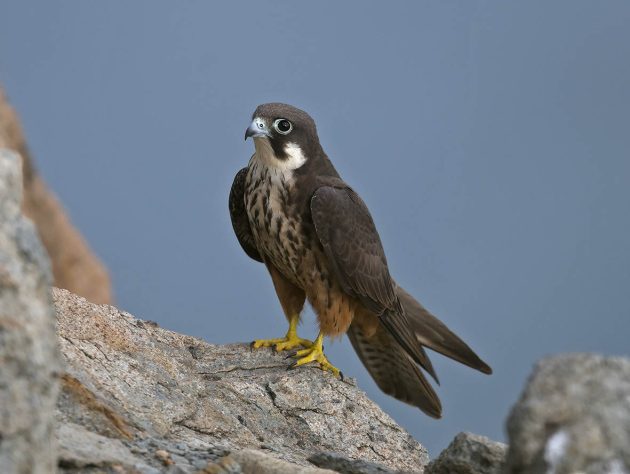
This bird arrives to the Mediterranean and adjacent islands (e.g. Lanzarote in the Canaries) in late spring from wintering grounds in Madagascar. Eleonora’s is really a large, long-winged hobby, which spends most of the year hunting insects in the air. In fact, that is what they do when they arrive. Many then will go to inland sites where they dedicate their time to catching dragonflies and other large airborne insects. This aspect of their behaviour is not generally known and it is surprising to find that some of the best sites to see this species in the early part of the season are, in fact, well away from the coast.
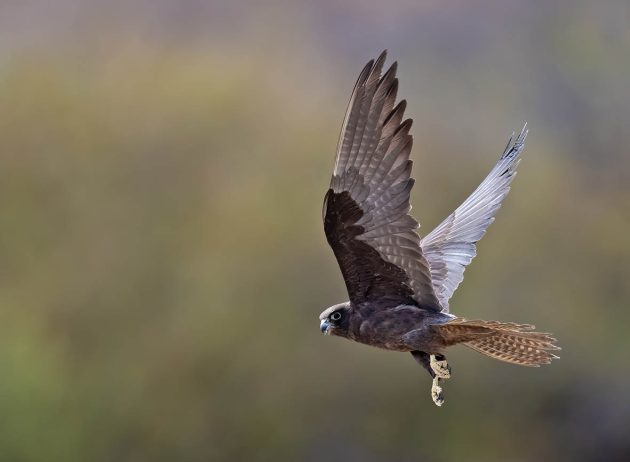
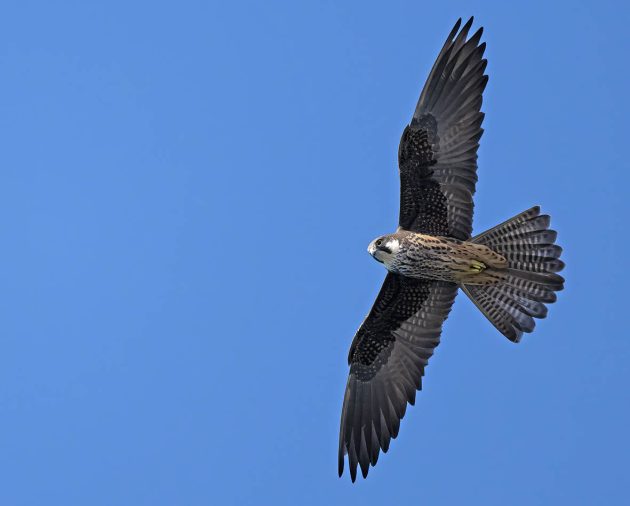
Come August and it’s time to head for the breeding colonies on islands. As September approaches, Eleonora’s Falcons change their feeding habits. Now they focus almost exclusively on hunting small passerines, which they catch in the air, preferably over the sea where the prey has little chance of escape. What they are doing is capitalising on the waves of migratory birds which are leaving the Palaearctic breeding grounds and heading for winter quarters in tropical Africa. This is an opportunity like no other and Eleonora’s has taken it when no other raptor has done so.
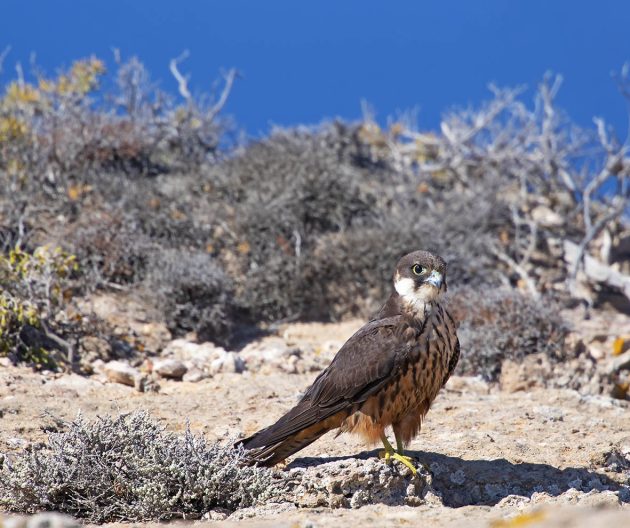
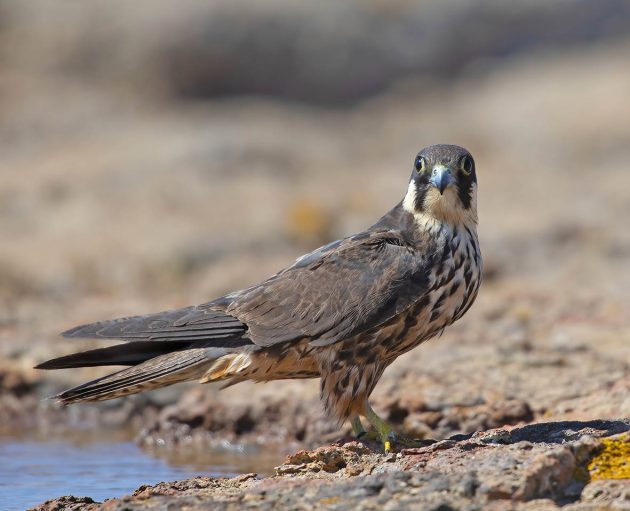
Here we have an amazing example of specialised adaptation to a specific food resource. A number of studies at the breeding colonies have revealed the range of birds which Eleonora’s will take. In Essaouira (Mogador), off the Atlantic coast of Morocco, the main prey species were Woodchat Shrike (Lanius senator), Whitethroat (Sylvia communis), Nightingale (Luscinia megarhynchos) and Common Redstart (Phoenicurus phoenicurus). At the eastern end of the Mediterranean, in Crete, it was Red-backed Shrike (Lanius collurio), Spotted Flycatcher (Muscicapa striata), Whinchat (Saxiola rubetra), and Whitethroat.
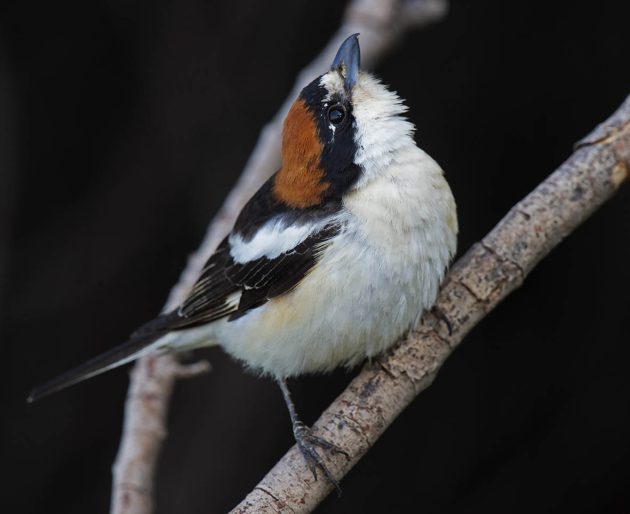
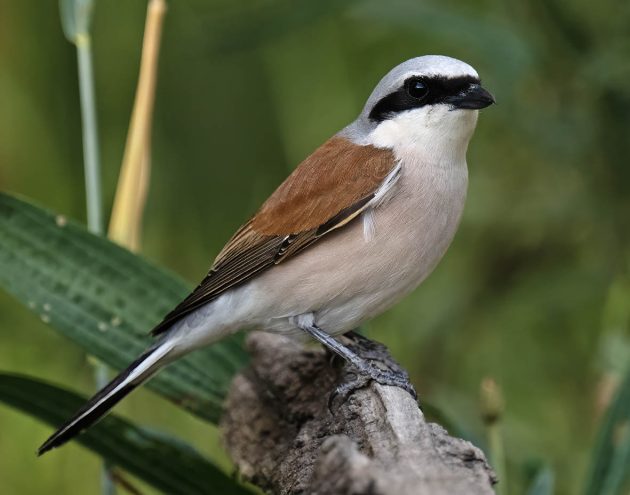
As the chicks fledge, towards the end of October and into early November, adults and juveniles head off for Madagascar to spend the winter catching large insects in the air. Recent tracking studies have revealed that, contrary to what had been once thought, these birds will make a fast, diagonal, crossing of the Sahara to reach eastern Africa and the shores of the Indian Ocean, before the final push to Madagascar. But, for now, they are here with us and we should make the most of enjoying these wonderful birds.
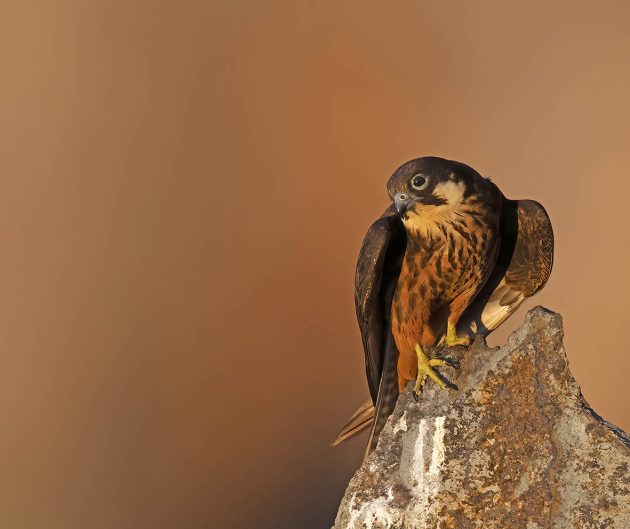













Wow, terrific photos as usual, Clive, and fascinating text. These falcons appear to be very successful hunters. I once watched, in Cyprus, a young Swift pursued by seven Eleonora’s. The chase didn’t last long.
Thanks David, yes swifts feature on their menu, although not as often as passerines.
Thanks, great pictures and wholesome text! Never tire of raptors and their adaptations!
If you are very lucky, you can find Eleonora’s Falcons as very rare vagrants in Germany, mostly in August. They are barely annual, and I actually can’t remember any in the last few years. I was lucky to see them several times in Greece (and once in Germany 😉 ), and they are truly majestic raptors. Thanks for sharing your amazing pictures.
thanks for your comments – they are great birds!
cheers